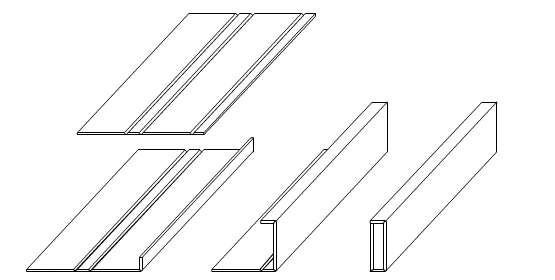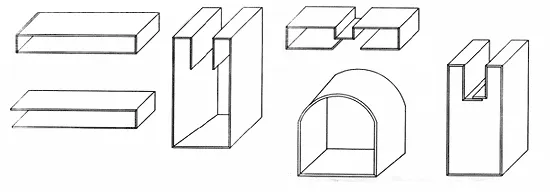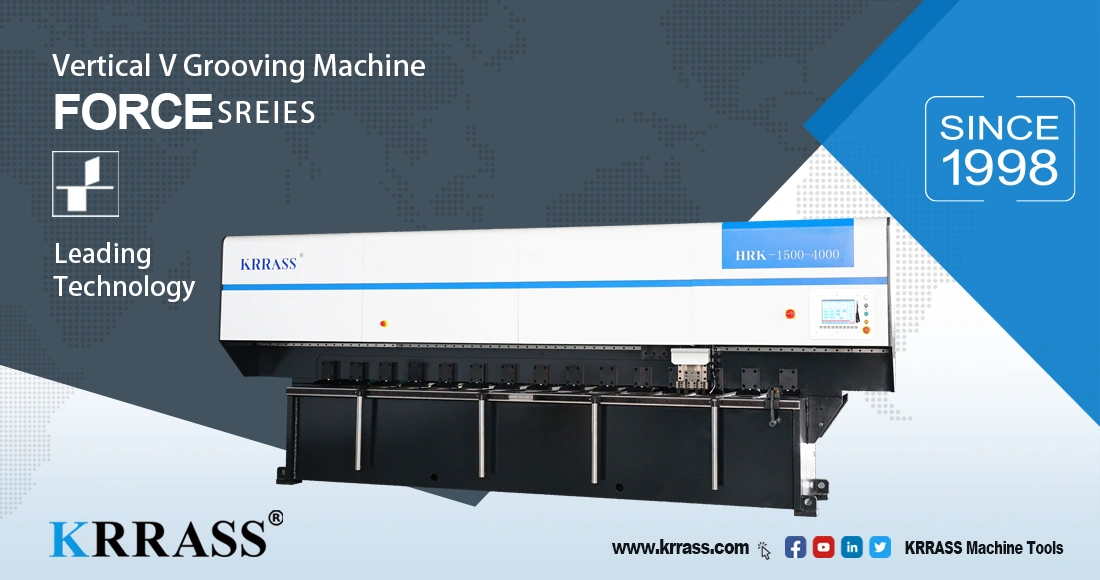1. Small bending force requirement for bending the workpiece

It can be seen from the bending force calculation formula that the bending force required for the bending of the workpiece is proportional to the thickness of the plate.
The bending force is large for bending thick plate, and the bending force is small for the thin workpiece.
In the V-shaped groove bending technique, the thickness of the plate is reduced by V cutting in the bending position of the plate, and reduced the bending force that is needed.
Since the depth of the V-shaped groove is 1/2 plate thickness, it can save half of the bending force.
2. A small bending radius of the workpiece
For free bending, the bending radius is proportional to the V-opening width of the die. The width of the die opening is generally 8 to 12 times the thickness of the plate.
To obtain a smaller bending radius, you need to select a die with smaller V-opening width.
The thicker the plate, the larger the V-opening width of the die, and the bigger the bending radius.
On the contrary, the thinner the plate, and the smaller the V-opening width of the selected die, and the smaller the bending radius.
The thickness of the plate is reduced at the bend position by V grooving, and the bending radius of the workpiece are naturally proportionally reduced.
In the plate strength range, the thinner the remaining thickness, the smaller the bending radius of the workpiece.
3. Small color changes at the bent round edges of the workpieces
During the V-shape bending process of the plate, the inside of the workpiece’s bending radius is under compress force and generates compression deformation.
The outside of the bending radius is under stretch force and generates elongation.
The main factors that influence the color changes of the bent round edge of the workpiece are the elongation deformation caused by the lateral tensile strength.
It can be seen from the V-shape bending process of the sheet that the elongation deformation caused by the lateral tensile force is also related to the thickness of the plate.
By V-grooving the plate, the thickness of the plate at the bending position is reduced and the elongation deformation generated by the lateral tensile force during bending is also decreased, therefore realizing the purpose of small color changes at the bent round edges of the workpiece.
4. Small straightness errors of the bent round edge of the narrow long workpiece
Generally, in the process of bending narrow long workpiece, the inside of the bending radius generates compression deformation under compress force in the direction of width.
The deformation materials move at both ends in the length direction.
The outside of the bending radius generates elongation under tensile strength in the width direction. The materials move to the center in the length direction.
In this way, the bent around edge’s line of the workpiece forms center-concave.
The larger the bending deformation, the more serious the center-concave of the edge line.
The smaller the bending deformation, the less serious the center-concave of the edge line.
Since V-grooving reduces the plate thickness at the bending position, the bending deformation also reduced.
Therefore, the V-grooving bend forming technique makes the straightness errors of the edge line of the narrow long workpiece become small.
5. Adopt general mold to bend the workpiece with a complicated or enclosed cross-section
For press brake, just the general toolings are needed to conduct the V-grooving bend forming technique.
Some workpieces with complicated or enclosed cross-sections can be bent without special toolings by correctly controlling the grooving depth and edge length (as shown in fig.2), which will reduce the expense incurred by the complex toolings with special design and shorten the processing cycle.

Learn more about our products, please visit and subscribe to our Youtube channel





